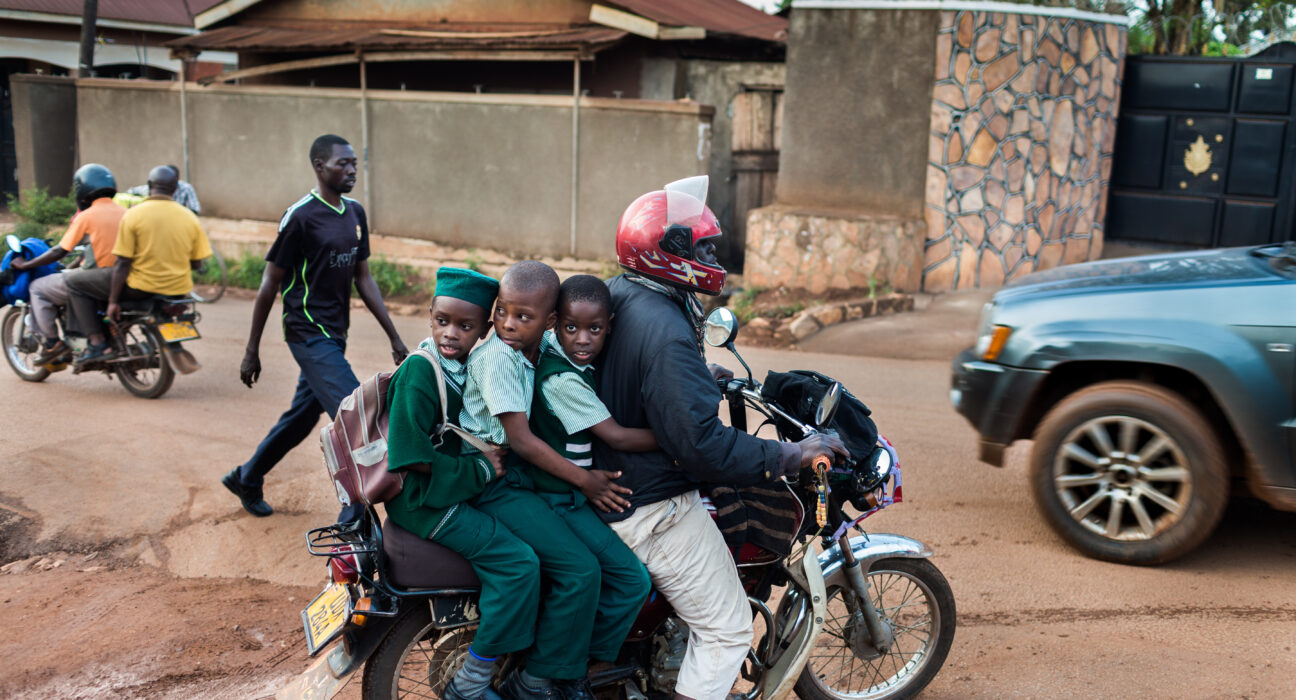This article was first published in New Vision on June 4, 2014
By S. Van Heusen
As I am driving around town in Kampala, I see children on their way to school subjected to such danger that it sends shivers down my spine. Why am I seeing children in the front seat of cars without even a seat belt on?
Why are there numbers of small children darting out into traffic to cross the street without an accompanying adult?
A parent with his two little boys on a motorcycle is wearing a helmet, but his sons are not. The reasons may have to do with not being able to afford safety supplies like helmets, but most cars in Kampala have seat belts that are not frequently used.
A child cannot provide himself with safe transportation to school. While a child may survive an accident, he may live the rest of his life with an injury. Parents, therefore, need to pay attention to the facts about safety.
If you know the facts about the vehicle and pedestrian safety requirements and do not follow them, it will be hard for you to live with the aftermath should your child get involved in an accident.
Below are some tips for protecting your child from accidents.
Cars
Babies and toddlers must be strapped into a back seat facing the rear of the vehicle. Facing the rear of the car is safer than facing the front. Between the ages of two and four, the child must be strapped into a car seat until she outgrows the height limits and weight of that car seat, which is usually 20 to 36kg. Children from four to eight years old need to be in a booster seat that is firmly attached to the back seat of the car by the seat belt. Seat belts for older children must be used correctly, never allowing the cross-body strap to be kept behind him.
Every single person in the vehicle always needs to have their seat belt on or it endangers them as well as the others in the car. Consider the danger of the full weight of an adult hurling towards your child at 70 kmph when the vehicle comes to a halt. The car should not begin to move until the children are in their car seats and everyone else has their seat belts on.
Boda bodas (motorcyclists)
This should be your last resort for your child’s transportation at any time. Babies? Never. No child should ever be on a boda boda without a helmet. It may be the faster way to get through the traffic and costs less than other transportation means, but it will never be worth the risk.
Matatus (Mini-buses)
It does not take scientific evidence to tell you that a good number of the matatus are being driven aggressively. Sit further back from the front seat where you and your child could get thrown through the
front window.
Walking
A child’s judgment is not mature enough to always make the right choice when it comes to crossing a street. A safety-trained child will make the right decision most of the time. But you cannot take the chance about that other small percentage of times when he does not make the right decision.
Children should never walk alone and the group that is walking together needs to have a reliable adult with them.
As I sat recently on a balcony and looked out over a busy intersection near Acacia Avenue and Kira Road, I watched a policewoman dash over to a little girl and lead her across the street safely. Many thanks to her and to other police who take a moment to help children and the elderly cross our city roads.
The writer is a child psychotherapist

